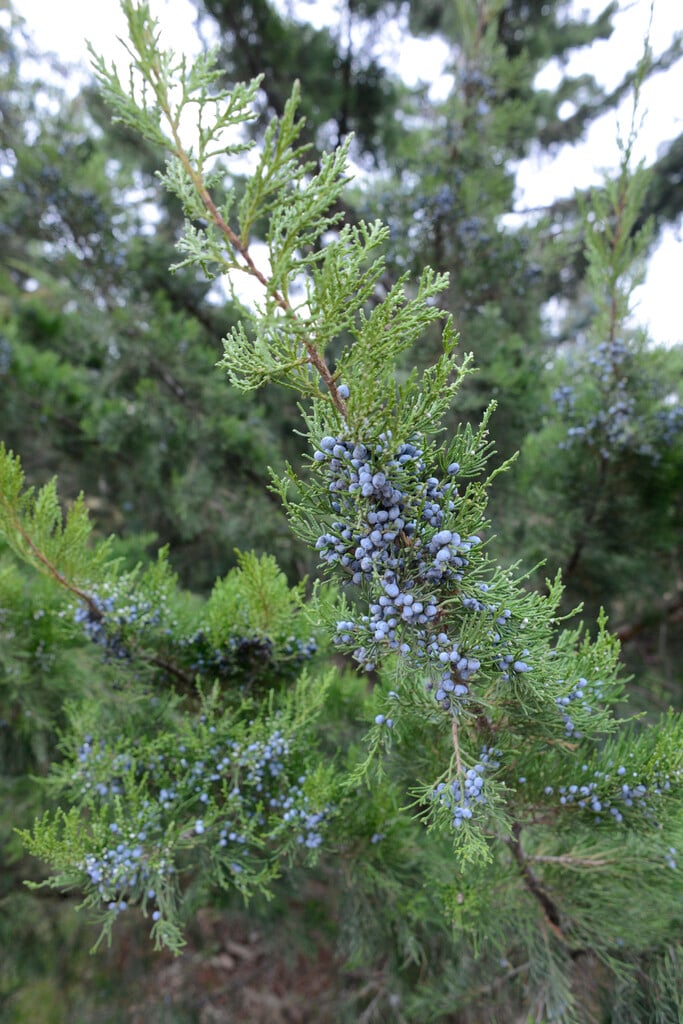Juniperus virginiana
pencil cedar
A cone-shaped or columnar evergreen tree with mid-to dark green needle-like foliage. As a mature specimen of 15-30m (50-100ft) it is well-branched with peeling brown bark. Small round blue-green fruits appear in autumn.
Size
Ultimate height
Higher than 12 metresTime to ultimate height
20–50 yearsUltimate spread
4–8 metresGrowing conditions
Moisture
Moist but well–drained, Well–drainedpH
Acid, Alkaline, NeutralColour & scent
| Stem | Flower | Foliage | Fruit | |
| Spring | Green | |||
|---|---|---|---|---|
| Summer | Green | |||
| Autumn | Green | |||
| Winter | Green |
Position
- Full sun
Aspect
East–facing or South–facing or West–facing
Exposure
Exposed or ShelteredDrought resistance
Yes Hardiness
H6Botanical details
- Family
- Cupressaceae
- Native to GB / Ireland
- No
- Foliage
- Evergreen
- Habit
- Columnar upright, Spreading branched
- Potentially harmful
- Harmful if eaten/skin allergen. Wear gloves and other protective equipment when handling
- Genus
Juniperus can be prostrate or erect, evergreen shrubs or trees with aromatic, scale-like or sharply pointed awl-shaped leaves, and small globose fruits
- Name status
Correct
How to grow
Cultivation
Grow in any well-drained soil, including dry, chalky or sandy soils in full sun. See tree cultivation
Propagation
Propagate by semi-hardwood cuttings in early autumn
Suggested planting locations and garden types
- Architectural
- Low Maintenance
- Hedging and screens
Pruning
See pruning group 1
Pests
May be susceptible to aphids, scale insects, conifer red spider mite and caterpillars
Diseases
May be susceptible to phytophthora, canker and honey fungus. See also Conifers: brown patches
Get involved
The Royal Horticultural Society is the UK’s leading gardening charity. We aim to enrich everyone’s life through plants, and make the UK a greener and more beautiful place.
